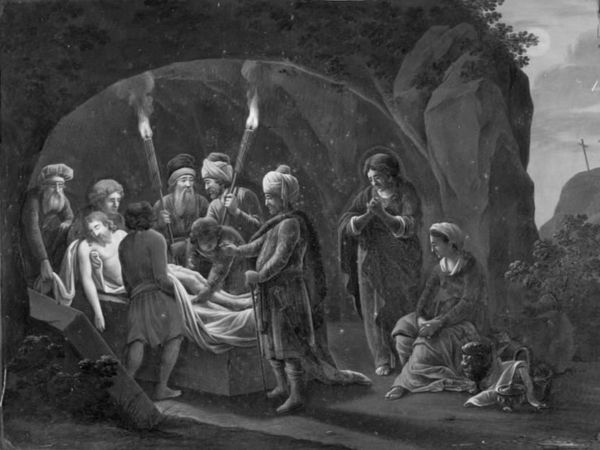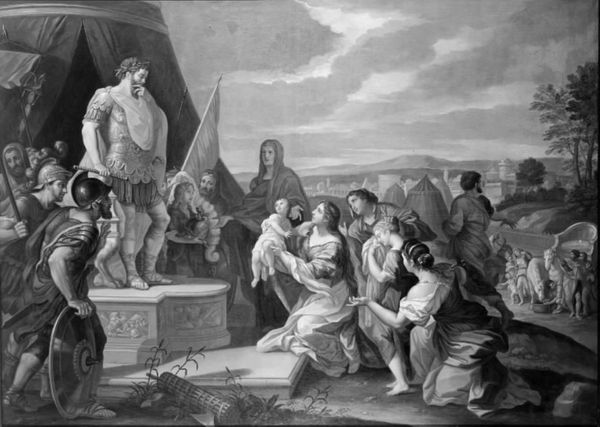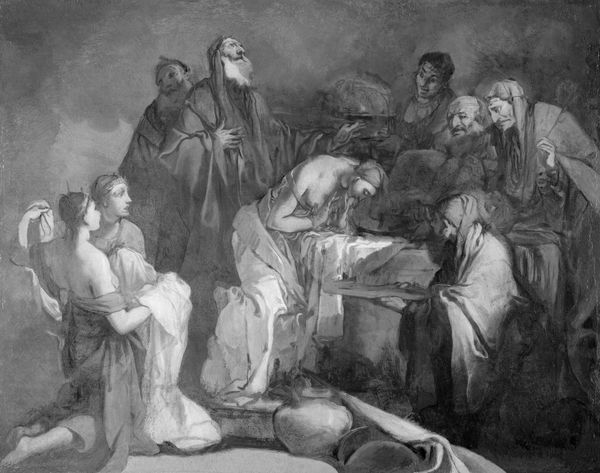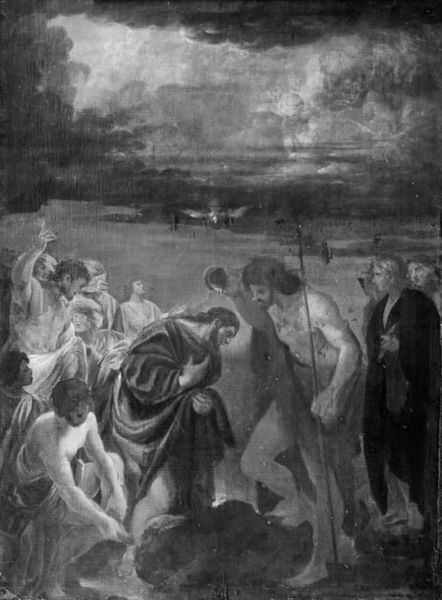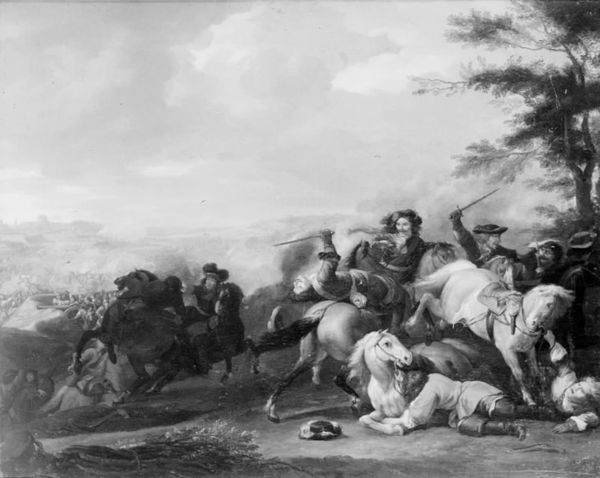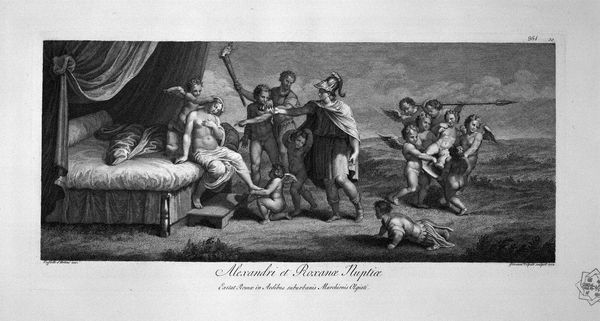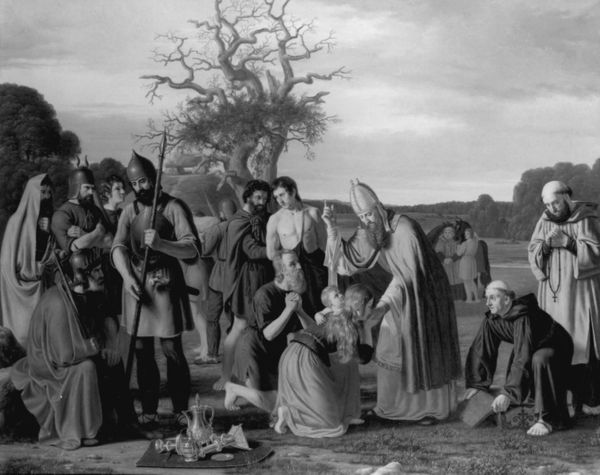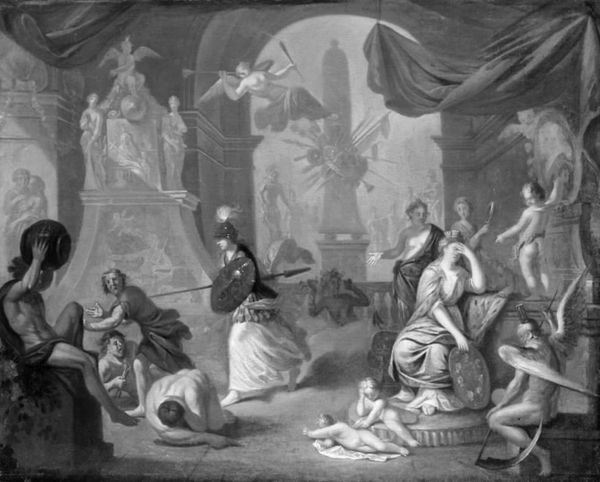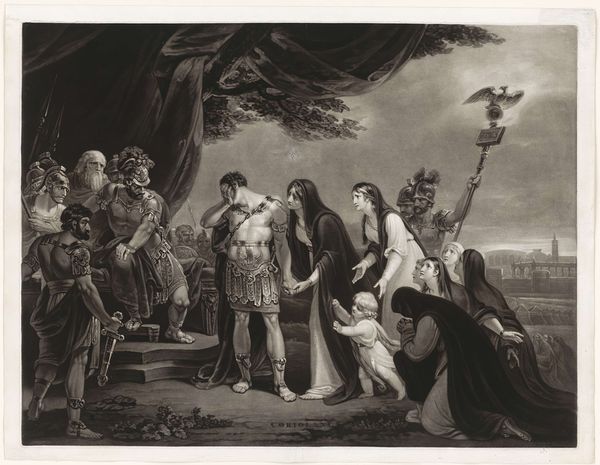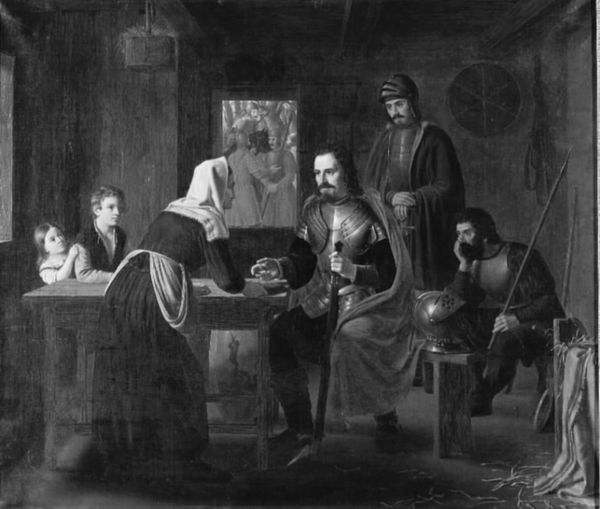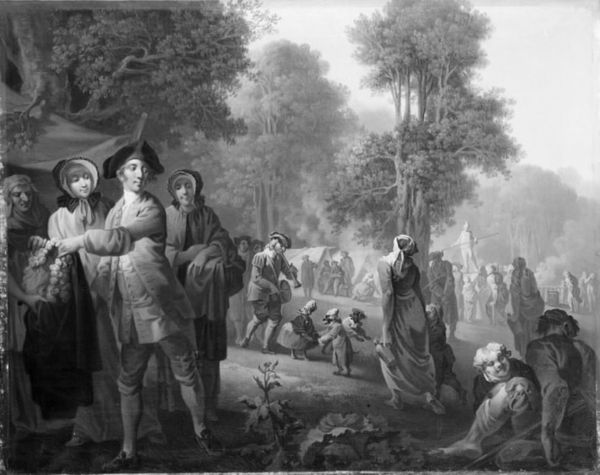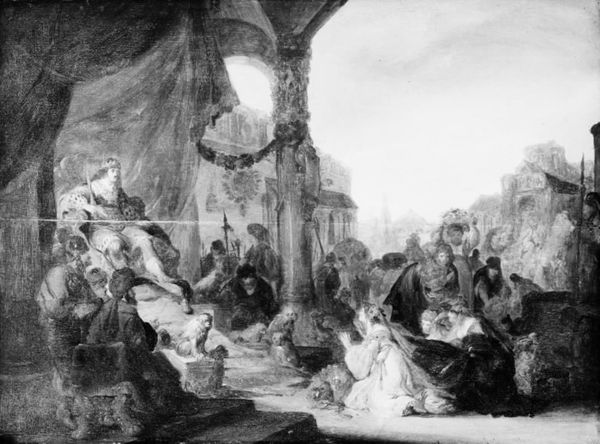
painting, canvas, wood
#
painting
#
landscape
#
figuration
#
canvas
#
romanticism
#
black and white
#
monochrome photography
#
wood
#
genre-painting
#
history-painting
#
monochrome
#
monochrome
Dimensions: 145 cm (height) x 197 cm (width) (Netto)
Editor: We’re looking at "Josef forklarer drømmen om negene for sine brødre", painted in 1833 by Albert Küchler. It's on canvas, and I am immediately struck by the figures gathered in what appears to be a monochrome dreamscape. What can you tell us about this historical scene, Professor? Curator: Well, from a socio-historical perspective, the Danish Golden Age, Küchler's context, involved a surge in national romanticism and history painting, aiming to solidify a cultural identity. This particular piece depicts a biblical scene. Notice how Küchler represents Joseph, likely drawing upon existing depictions but reinterpreting them within his Romantic era’s sensibility. Consider, too, the potential viewers – what messages might Küchler have sought to communicate about faith, family dynamics, and the concept of destiny, all for the Danish audience? Editor: That's fascinating. The family dynamic seems fraught with tension based on their reactions to Joseph. The socio-political environment impacting a painting like this gives the work greater importance than just what is apparent from a visual standpoint. Curator: Precisely. Consider how patronage and the exhibition system might have influenced his choice of subject and style. And the power dynamics – who gets to tell whose story, and how? How did that shape not only artistic production, but also consumption of art? It’s always layered and complex. Editor: It sounds like there’s a real dialogue going on between the painting, the artist, and its audience at that time, reflecting the broader currents of the Danish Golden Age. It shows how paintings aren't just still objects. Curator: Indeed, these works become sites of negotiation and interpretation. Analyzing this one reveals that the historical context and cultural consumption of art can dramatically influence its role within society. It's a way to access and analyze culture from another point in time.
Comments
No comments
Be the first to comment and join the conversation on the ultimate creative platform.

